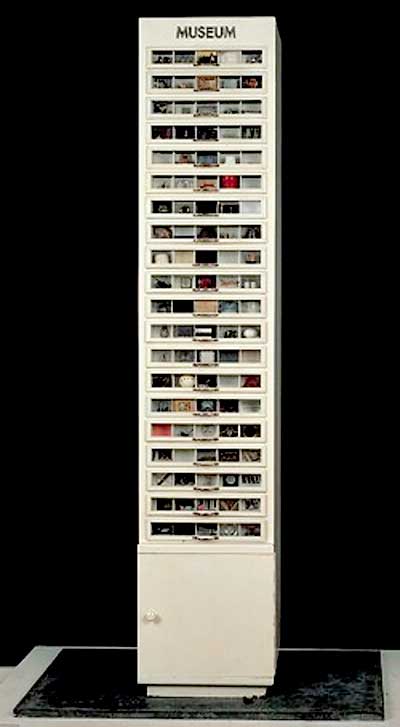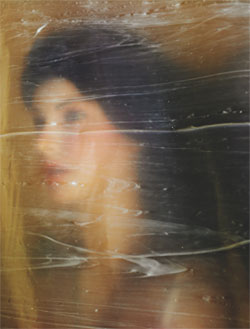
Friday, 20 February 2009
Charming Augustine

The film is inspired by series of photographs and texts on hysteria published by the great insane asylum in Paris in the 1880's under the title of the Iconographie photographique de la Salpetriere. It is an experimental narrative based on the case of a young patient, Augustine. At fifteen she was admitted to the hospital suffering from hysterical paralysis. The doctors were captivated by her frequent hysterical attacks. They appeared extraordinarily theatrical and photogenic. She became the star, the "Sarah Bernhardt" of the asylum. Yet at the same she was deeply disturbed. She had visions and heard voices. She hallucinated.
The film explores connections between attempts to document her mental states and the prehistory of narrative film. The role of the motion studies by Marey and Muybridge in the birth of cinema is well known. However while they attempted to study the mechanics of the body, the doctors at the Salpetriere, working with similar cameras, aimed to unlock the secrets of their patient's minds.
The film attempts to show how patients like Augustine supplied the psychic drive that would come to flower in the works of D.W. Griffith. Thus the language of the film changes; at first it is simply a medical document, then it becomes is an indication of Augustine's interior perception, her hallucinations. Finally she becomes "disenchanted" both in the contemporary sense of that word and in its original meaning of being awakened from a magnetic sleep or hypnotic trance.
Tuesday, 17 February 2009
Shattering the Hard Shell of Certainty

Today... I have been having a look at the Museum of Jurassic Technology in LA. This curious museum first first came to my attention when I watched a documentary about the German filmaker, Werner Herzog. During the course of an interview, Herzog took the interviewer there and introduced it as his favorite place in all of Los Angeles.
The museum's name is a puzzle as the Jurrasic period ended 150 million years before humans made an appearance on this earth... however, that's beside the point and the museum houses a most fascinating collection of items and curiosities.
Here are a few of the permanent collections on display-
- A collection of decomposing antique dice once owned by magician Ricky Jay and documented in his book Dice: Deception, Fate, and Rotten Luck
- A collection of micro-miniature sculptures and paintings, such as a sculpture of Pope John Paul II carved from a single human hair and placed within the eye of a needle
- A collection devoted to trailer park culture, entitled "Garden of Eden On Wheels."
I've always had a bit of a thing for trailer parks so the last exhibit is of particular interest to me.
Going back to my earlier point, I first heard of this place through Herzog, and today, it came into my life again when I was searching the net for information on the Salpetriere Clinic in Paris.
The Salpetriere was a clinic where 5000 women, who were all thought to be hysterical, where incarcetaried duing th first part of the 1900's. Charcot, a pioneering/deeply disturbed doctor there, was interested in recording the physical manifestation of the illness through photography. I have found a few books covering the topic but today, excitingly, I found a film. The film is called 'Charming Augustine' and it deals with the same sort of issues, using the Salpetriere as a backdrop. The filmmaker, Zoe Beloff, is interested in the doctors attempts to record the mechanics of their patients bodies in their efforts to unlock the secrets of their minds. This is mega interesting to me. I had a look into her page and found her father to be a philosopher who wrote extensively on dualism and had a very keen interest in art. It all comes together; philosophy, hysteria, photography, trailer parks and Werner Herzog. I'm sure the Museum of Jurrasic Technology would approve of such an eclectic mix.
Tuesday, 3 February 2009
Wunderkammer

Cabinets of curiosities (also known as Wunderkammer, Cabinets of Wonder, or wonder-rooms) were encyclopedic collections of types of objects whose categorical boundaries were, in Renaissance Europe, yet to be defined. Modern science would categorize the objects included as belonging to natural history (sometimes faked), geology, ethnography, archaeology, religious or historical relics, works of art (including cabinet paintings) and antiquities. "The Kunstkammer was regarded as a microcosm or theater of the world, and a memory theater. The Kunstkammer conveyed symbolically the patron's control of the world through its indoor, microscopic reproduction."[1] Of Charles I of England's collection, Peter Thomas has succinctly stated, "The Kunstkabinett itself was a form of propaganda"[2] Besides the most famous, best documented cabinets of rulers and aristocrats, members of the merchant class and early practitioners of science in Europe, formed collections that were precursors to museums
Monday, 2 February 2009
Archiving the 1970's Art World - Das Schubladenmuseum
 The Museum of Drawers by Herbert Distel
The Museum of Drawers by Herbert DistelFrom 1970 to 1977 Distel started working on his landmark 'Museum of Drawers' (Das Schubladenmuseum)], a found cabinet with 20 drawers each containing 25 tiny rooms where he invited living artists to contribute a miniature work of art. Artists included were: Arnulf Rainer, Carolee Schneemann, Mergert Christian, Pablo Picasso, Robert Cottingham, Billy Al Bengston, Joseph Beuys, John Baldessari, Carl Andre, Chuck Close, Tom Blackwell, Tom Phillips, Joe Goode, Charles Arnoldi, Camille Billops, Nam June Paik, Frederick J. Brown, Robyn Denny, Valie Export, Mel Ramos, Edward Ruscha, Dieter Roth and John Cage. At the same time George Maciunas was working on his Fluxus "Flux Cabinet" (1975-77).
Lynn Hershman Leeson - The Secret of Eternal Youth
Artist Lynn Hershman Leeson Discovers Secret of Eternal Youth: Reynolds Wrap
5/30/08 at 3:15 PM 00Comment 00Comments

Lynn Hershman Leeson’s Wrapped (2007).Courtesy bitforms gallery nyc.
You Can't Bottle it

Essence, athmosphere, ether. Buy some air from Mecca. Grass from Celtic Park. Holy Water from Lourdes. A chunk of the Berlin Wall. A bit of Mackintosh to take home - a minature chair, a necklace.... or just walk about and inhale the place.
I once went to the Louvre and it seemed that most people were more interested in taking home a photograph of the Mona Lisa than actually looking at her.
You can buy a new face in a bottle, knock off 20 years, or a new lifestyle in a sofa, it'll change everything, you'll be much thinner when you lie on it .... and your adoring husband, will, of course, be buff with chiselled cheek bones.

